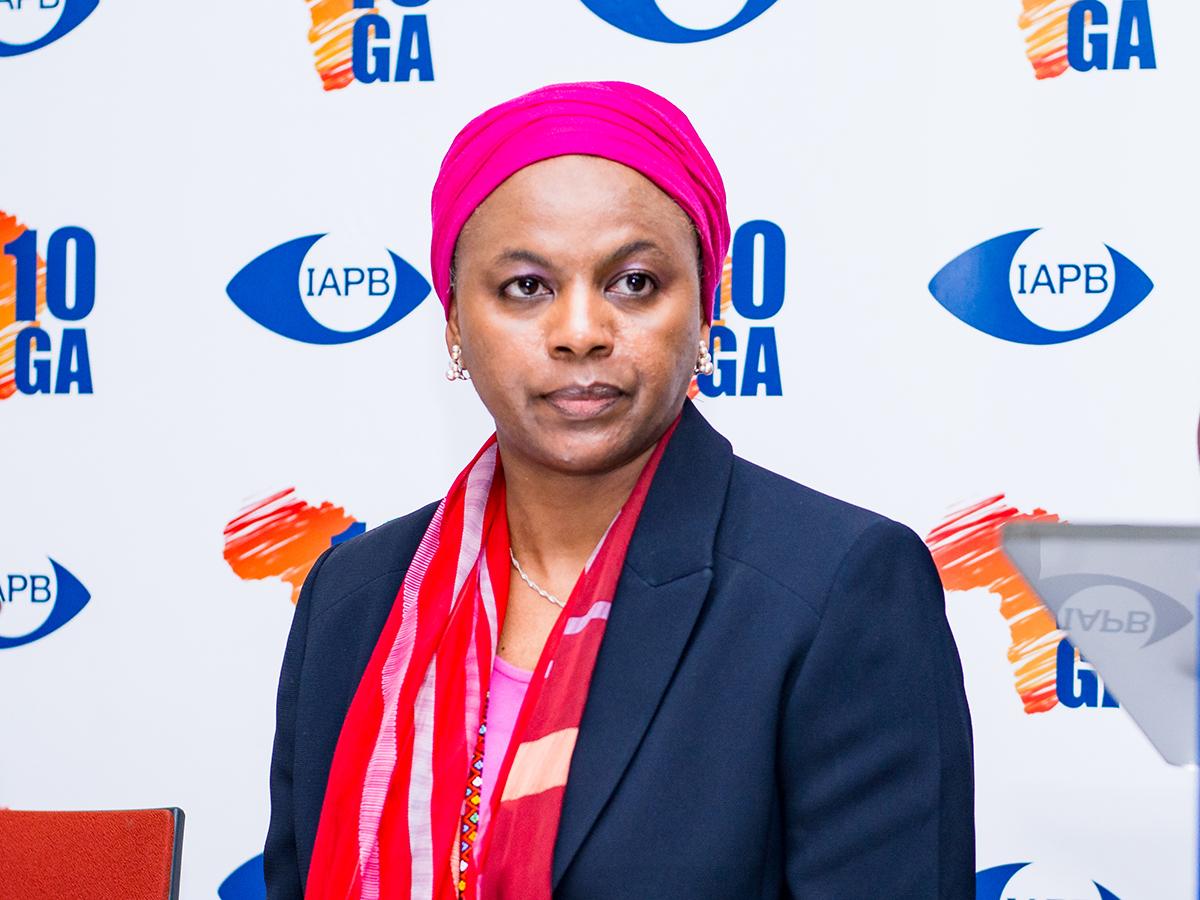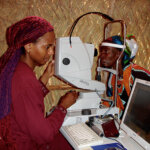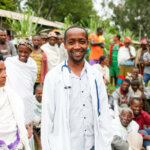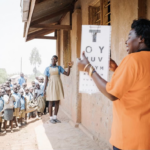- Eye Health
Glaucoma specialist Fatima Kyari about why awareness for the eye disease is so important.

Glaucoma causes irreversible blindness, if not detected early and treated appropriately. In Africa, population-based studies indicate that up to 95 percent of people affected do not know that they have glaucoma. Together with partner organisations, Light for the World has started a new programme which aims to tackle the eye disease. We spoke to Fatima Kyari, an ophthalmologist and glaucoma specialist who supports Light for the World.
Where does your personal interest for the eye disease glaucoma come from?
Fatima Kyari: When I was practicing as a trainee ophthalmologist at the National Eye Centre, I used to see a lot of cataract and glaucoma cases. We were able to treat the cataract patients immediately and give them back their sight. But with glaucoma, it was very difficult, because people came in very late when they had already lost a substantial amount of their vision. The loss of vision is irreversible in glaucoma. The only thing we could do was to help them to keep the little vision that was left. Over time, we found it difficult to keep track of the the patients to follow up, or we saw them much later with an even bigger decrease in vision.
In the Nigeria Blindness Survey, which had examined over 13,000 participants aged 40 years and above, we found that glaucoma featured as the second highest cause of blindness after cataract, accounting for 16 percent of all blindness. The aim of my work together with the Fred Hollows Foundation and the London School of Tropical Medicine was to research an eye disease that needed improved services. We chose glaucoma.
What are the reasons for glaucoma?
The main risk factors are high intraocular pressure (pressure inside the eye) and increasing age, although it might also start in young people. Glaucoma affects the optic nerve at the back of the eye, causing a disruption of the connection between the optic nerve and what the eye can see. So, there is a functional deficit which shows up as visual field defect. Usually the sides of the vision are affected, you don’t see the full field. Sometimes the centered visual acuity is maintained until the end. This is why glaucoma may not be noticeable, because it might also start in one eye more than the other. The good eye compensates for the lessened vision in the worse eye, while this eye is deteriorating. The person does not really realise the loss of the vision, until the second eye starts to deteriorate as well.
There is also an increase of glaucoma cases globally. Why is that?
Populations are getting older and there is an increasing global population; so there is an increase in the number of people at risk of having glaucoma. We also do more population based studies now, which is why we know that the problem is out there.
What role does awareness-raising play to in tackling glaucoma?
Awareness about glaucoma is generally low, globally. In developing countries only about 5-10 percent of people that have glaucoma actually know that they have it. If people are more aware about glaucoma, they are able to watch out for it. With regular eye examination, more people will have any vision loss detected at an earlier stage. However, regular eye examinations are not carried out in most places. Hopefully, the more people are aware, the more the demand will be for services.
A really important aspect – are there specifically trained ophthalmologists? What is the situation for ophthalmologists in developing countries?
Patients do not like to accept surgery as such, as it does not offer improvement of vision. Cataracts as a condition is much more known, and surgery enables regaining of the sight 95% of the time. And Ophthalmologists themselves are often frustrated with glaucoma treatment, because they can’t offer a cure at the stage patients tend to come to them. One of the strategies for improving this aspect is to enhance surgeons’ skills, especially in the less invasive options of treatment such as MIGS and laser treatment. More ophthalmologists are being trained to become highly skilled glaucoma specialists.
This is one aspect of the new programme Light for the World has started. What else makes this programme so exceptional?
The focus on training of ophthalmologists has been ongoing from 2010. However, in 2018, Light for the World also saw that there is a need to improve this training in some of the countries they are working in. The exciting thing is that we are not just training the doctors for glaucoma care, we are also equipping the hospitals where those ophthalmologists work. These ophthalmologists are also being taught to be trainers for other doctors, and in addition the programme supports awareness raising within the communities. Now, you have a specialist who is able to offer the service, you have the equipment, which helps the service provision and you now have increased awareness of the community which helps increase the uptake of the services.



